Grow Ginger Indoors? Absolutely! Imagine stepping into your kitchen and harvesting fresh, zesty ginger straight from your windowsill. No more last-minute grocery runs or settling for dried-out roots. This isn’t just a gardening project; it’s a culinary adventure waiting to happen, and I’m thrilled to guide you through it!
For centuries, ginger has been prized not only for its unique flavor but also for its medicinal properties. Originating in South Asia, it has woven its way into countless cuisines and traditional remedies across the globe. From soothing teas to vibrant stir-fries, ginger’s versatility is undeniable. But what if I told you that you could cultivate this incredible spice right in your own home, regardless of your outdoor space?
Many people shy away from gardening, thinking it requires vast land or specialized knowledge. But that’s simply not true! Growing ginger indoors is surprisingly easy and rewarding. It’s a fantastic way to add a touch of green to your living space, enjoy a sustainable source of fresh ginger, and impress your friends with your newfound green thumb. Plus, who wouldn’t want to have a readily available remedy for a sore throat or a flavorful ingredient for their next culinary masterpiece? Let’s unlock the secrets to successfully grow ginger indoors and transform your home into a thriving mini-garden!
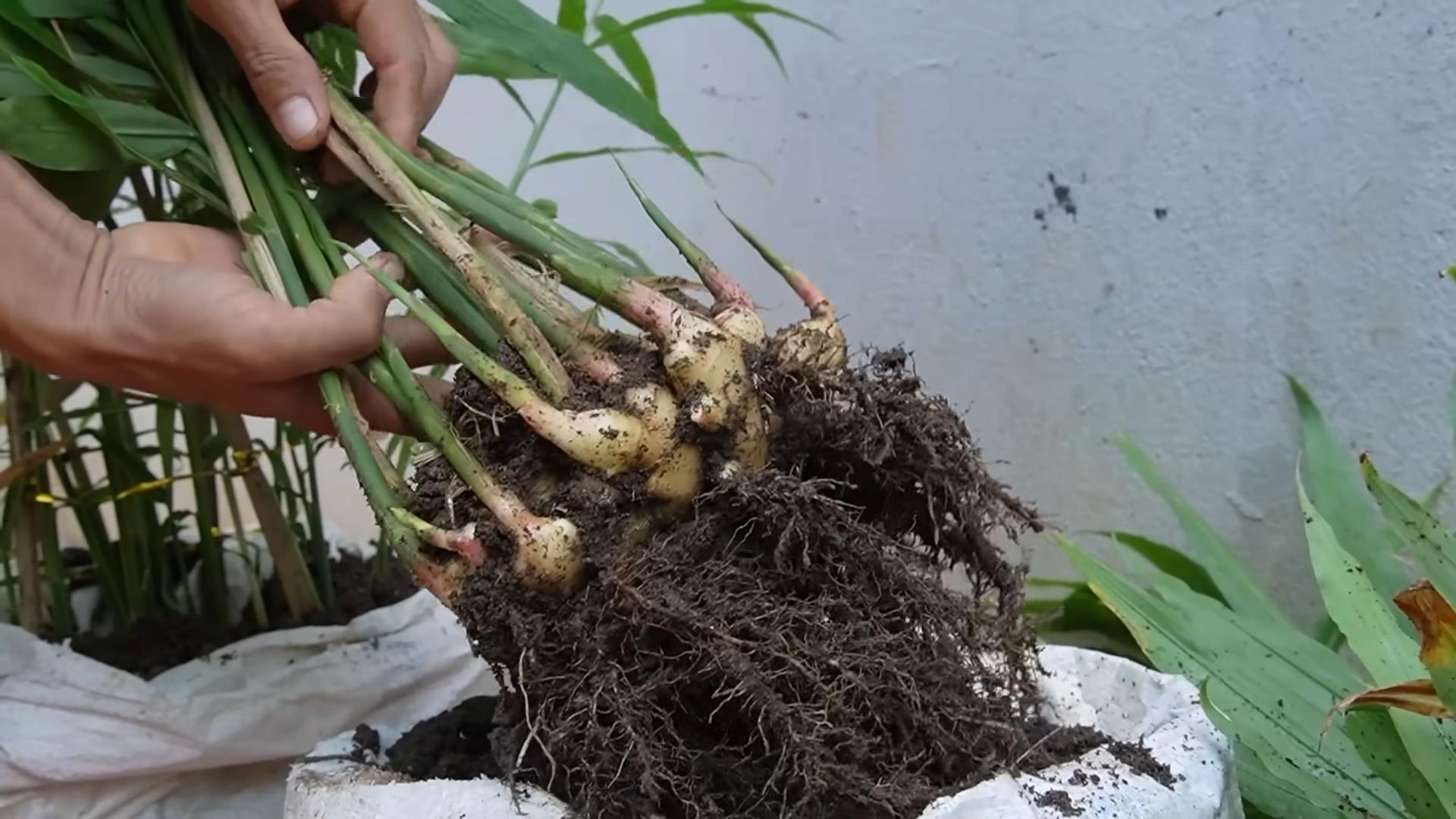
Growing Ginger Indoors: A Spicy DIY Adventure!
Hey there, fellow plant enthusiasts! Ever thought about growing your own ginger? It’s surprisingly easy and rewarding, plus you’ll have fresh ginger on hand whenever you need it for cooking, tea, or even just a little aromatic boost. I’ve been growing ginger indoors for a few years now, and I’m excited to share my secrets with you. Let’s get started!
What You’ll Need: Your Ginger-Growing Arsenal
Before we dive in, let’s gather our supplies. Here’s what you’ll need to become a ginger-growing guru:
* Ginger Rhizome: This is the star of the show! Look for a plump, healthy-looking piece of ginger root at your local grocery store or farmers market. Choose one with visible “eyes” (small buds) on it. Organic ginger is often recommended, as it’s less likely to have been treated with growth inhibitors.
* Pot: A wide, shallow pot is ideal. Ginger roots grow horizontally, so a wider pot will give them plenty of room to spread out. Aim for a pot that’s at least 6-8 inches deep and 12 inches wide. Good drainage is crucial, so make sure your pot has drainage holes.
* Potting Mix: Use a well-draining potting mix. A mix designed for vegetables or herbs works great. You can also create your own by combining equal parts potting soil, perlite, and compost.
* Water: Filtered or tap water that has sat out for 24 hours to allow chlorine to dissipate is best.
* Spray Bottle: For misting the ginger and maintaining humidity.
* Warm Location: Ginger loves warmth! A spot that gets indirect sunlight is perfect.
* Optional:
* Liquid fertilizer (organic is best)
* Seed starting tray (for pre-sprouting)
Step-by-Step Guide: From Rhizome to Root
Okay, now for the fun part! Here’s how to grow your own ginger indoors:
Phase 1: Preparing the Ginger Rhizome
1. Soaking the Rhizome (Optional but Recommended): I like to soak my ginger rhizome in lukewarm water for 12-24 hours before planting. This helps to rehydrate it and encourage sprouting. It’s not absolutely necessary, but I’ve found it gives the ginger a head start.
2. Cutting the Rhizome (If Necessary): If your ginger rhizome is large, you can cut it into smaller pieces, making sure each piece has at least one or two “eyes” (buds). Let the cut pieces air dry for a day or two to allow the cut surfaces to callous over. This helps prevent rot. If you have a smaller piece of ginger, you can plant it whole.
Phase 2: Planting the Ginger
3. Filling the Pot: Fill your pot with the well-draining potting mix, leaving about an inch or two of space at the top.
4. Planting the Ginger: Place the ginger rhizome on top of the soil, with the “eyes” facing upwards. Cover the rhizome with about 1-2 inches of soil.
5. Watering: Gently water the soil until it’s moist but not soggy. Avoid overwatering, as this can lead to rot.
Phase 3: Nurturing Your Ginger Plant
6. Finding the Right Location: Place the pot in a warm location that receives indirect sunlight. A spot near an east-facing or north-facing window is usually ideal. Avoid direct sunlight, as it can scorch the leaves.
7. Maintaining Humidity: Ginger loves humidity! Mist the plant regularly with a spray bottle, especially during dry periods. You can also place the pot on a tray filled with pebbles and water. As the water evaporates, it will increase the humidity around the plant.
8. Watering Regularly: Keep the soil consistently moist, but not soggy. Water when the top inch of soil feels dry to the touch. Be careful not to overwater, as this can lead to root rot.
9. Fertilizing (Optional): You can fertilize your ginger plant every few weeks with a diluted organic liquid fertilizer. This will help to promote healthy growth. Follow the instructions on the fertilizer label.
10. Patience is Key: It can take several weeks for the ginger to sprout, so be patient! Keep the soil moist and the plant in a warm location, and eventually, you’ll see little green shoots emerging from the soil.
Phase 4: Harvesting Your Ginger
11. When to Harvest: You can start harvesting ginger about 8-10 months after planting. The leaves will start to turn yellow and die back, which is a sign that the ginger is ready to harvest.
12. Harvesting: To harvest, gently dig around the plant and lift the rhizome out of the soil. You can harvest the entire rhizome or just a portion of it, leaving the rest to continue growing.
13. Storing Your Ginger: Freshly harvested ginger can be stored in the refrigerator for several weeks. You can also freeze it for longer storage. To freeze ginger, peel it and then grate or slice it. Place the grated or sliced ginger in a freezer bag and store it in the freezer.
Troubleshooting: Common Ginger-Growing Problems
Even with the best care, you might encounter a few challenges along the way. Here are some common problems and how to fix them:
* No Sprouting: If your ginger isn’t sprouting, make sure it’s in a warm location and the soil is consistently moist. You can also try covering the pot with plastic wrap to create a humid environment.
* Yellowing Leaves: Yellowing leaves can be a sign of overwatering, underwatering, or nutrient deficiency. Check the soil moisture and adjust your watering accordingly. If the soil is consistently moist, you may be overwatering. If the soil is dry, you may be underwatering. You can also try fertilizing the plant with a diluted organic liquid fertilizer.
* Root Rot: Root rot is a fungal disease that can occur if the soil is too wet. To prevent root rot, make sure your pot has good drainage and avoid overwatering. If you suspect root rot, you can try repotting the plant in fresh, well-draining potting mix.
* Pests: Ginger plants can be susceptible to pests such as aphids and spider mites. If you notice pests on your plant, you can try spraying it with insecticidal soap or neem oil.
Extra Tips and Tricks for Ginger-Growing Success
* Rotate Your Ginger: Rotate your ginger plant every few days to ensure that all sides receive equal sunlight.
* Use Rainwater: If possible, use rainwater to water your ginger plant. Rainwater is naturally soft and free of chemicals.
* Ginger Tea: Use your freshly grown ginger to make delicious and healthy ginger tea! Simply grate a small piece of ginger and steep it in hot water for a few minutes.
* Experiment with Varieties: There are many different varieties of ginger, each with its own unique flavor and aroma. Experiment with different varieties to find your favorite.
* Ginger in Cooking: Don’t forget to use your homegrown ginger in your favorite recipes! It adds a wonderful flavor to stir-fries, soups, curries, and more.
Growing ginger indoors is a fun and rewarding experience. With a little patience and care, you can enjoy fresh, homegrown ginger all year round. Happy growing!
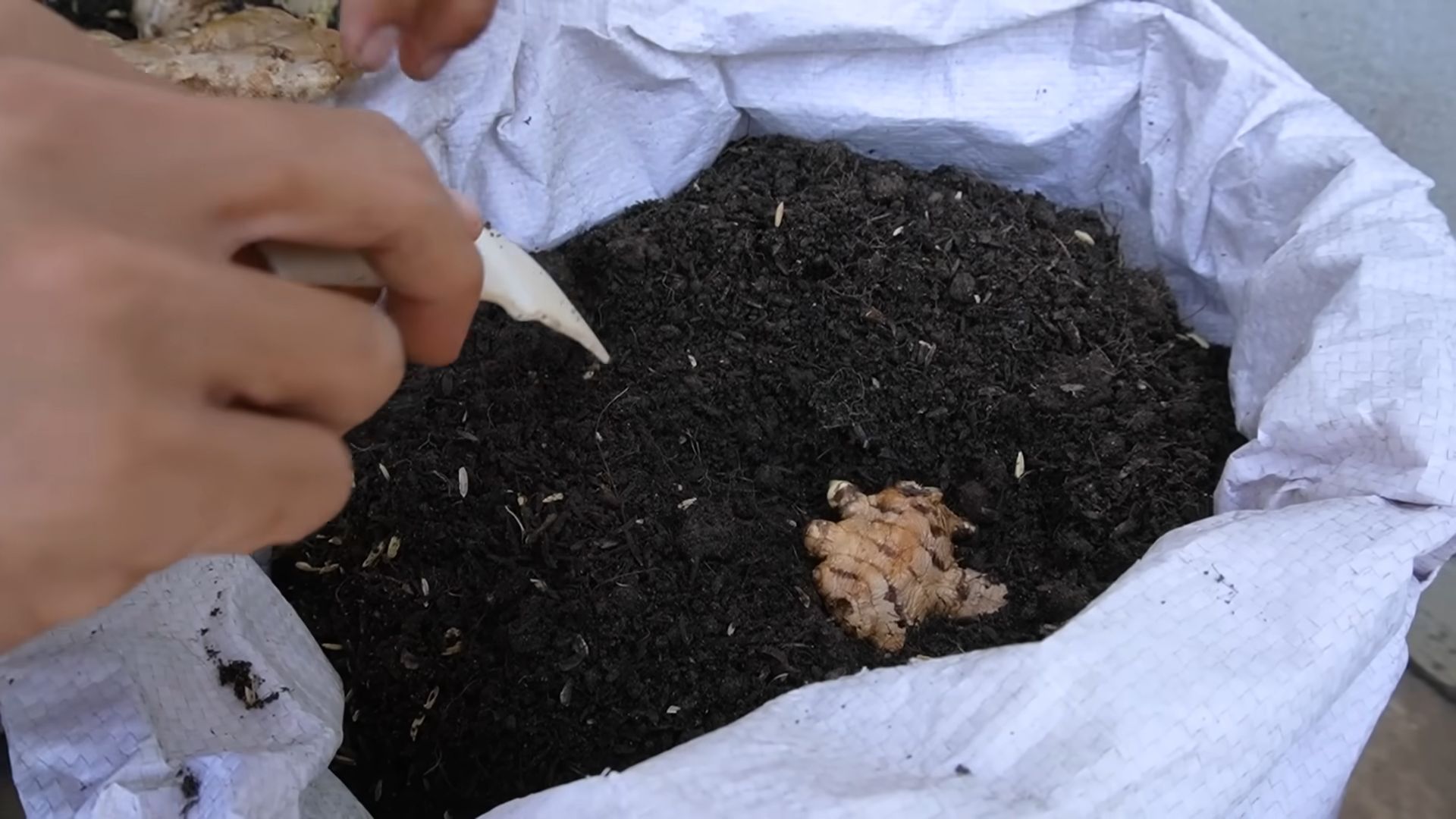
Conclusion
So, there you have it! Growing ginger indoors is not only achievable, but it’s also a rewarding experience that brings a touch of the exotic to your home. Forget relying solely on store-bought ginger, often of questionable freshness. With a little patience and the right conditions, you can have a constant supply of fresh, vibrant ginger right at your fingertips.
Why is this DIY trick a must-try? Because it empowers you to control the quality and freshness of your ginger. Imagine the satisfaction of harvesting your own ginger root, knowing exactly where it came from and how it was grown. The flavor is noticeably brighter and more intense than anything you’ll find on a supermarket shelf. Plus, it’s a sustainable way to reduce your reliance on commercially grown produce, minimizing your environmental impact.
Beyond the practical benefits, growing ginger indoors is also a fascinating learning experience. You’ll gain a deeper understanding of plant life cycles and the factors that influence growth. It’s a fantastic project for families, offering a hands-on opportunity to teach children about botany and where their food comes from.
Looking for variations? Consider experimenting with different varieties of ginger. While common ginger (Zingiber officinale) is the most readily available, you might be able to find other types like galangal or turmeric, which can also be grown indoors using similar methods. You can also play around with different potting mixes to see what works best for your environment. Some gardeners swear by a mix of coco coir, perlite, and compost, while others prefer a more traditional potting soil blend. Don’t be afraid to experiment and find what suits your needs.
Another fun variation is to use your homegrown ginger in different ways. Beyond the usual culinary applications, try making your own ginger tea, candied ginger, or even ginger-infused oil. The possibilities are endless!
We wholeheartedly encourage you to give this DIY trick a try. It’s a simple, affordable, and incredibly rewarding project that will bring a touch of freshness and flavor to your life. Don’t be intimidated if you’ve never grown anything before. Ginger is a relatively forgiving plant, and with a little care and attention, you’ll be harvesting your own roots in no time.
Once you’ve embarked on your indoor ginger growing journey, we’d love to hear about your experience! Share your tips, tricks, and photos in the comments below. Let’s create a community of indoor ginger growers and learn from each other. What challenges did you face? What successes did you celebrate? Your insights could be invaluable to other aspiring ginger growers. So, go ahead, get your hands dirty, and discover the joy of growing your own ginger indoors. You won’t regret it!
Frequently Asked Questions (FAQ)
What kind of ginger should I use to start growing?
The best ginger to use for starting your indoor garden is fresh, plump ginger root (rhizome) from the grocery store. Look for pieces that are firm, with tight skin and visible “eyes” or buds. Avoid ginger that is shriveled, moldy, or has soft spots. Organic ginger is often recommended, as it’s less likely to have been treated with growth inhibitors.
How long does it take to grow ginger indoors?
Growing ginger indoors is a patience game. It typically takes several months, around 8-10 months, from planting to harvest. You’ll start to see shoots emerge from the soil within a few weeks, but it will take several months for the rhizomes to mature and reach a harvestable size.
What are the ideal growing conditions for indoor ginger?
Ginger thrives in warm, humid environments with indirect sunlight. Aim for a temperature range of 65-75°F (18-24°C). Place your ginger plant in a location that receives bright, indirect light, such as near an east-facing window. Avoid direct sunlight, which can scorch the leaves. Humidity is also crucial, so consider using a humidifier or placing the pot on a tray filled with pebbles and water.
How often should I water my indoor ginger plant?
Water your ginger plant regularly, keeping the soil consistently moist but not waterlogged. Allow the top inch of soil to dry out slightly between waterings. Overwatering can lead to root rot, so it’s essential to ensure proper drainage. During the winter months, when growth slows down, you can reduce watering frequency.
What type of soil is best for growing ginger indoors?
Ginger prefers well-draining, nutrient-rich soil. A good potting mix for ginger is a blend of equal parts potting soil, compost, and perlite. The potting soil provides a base, the compost adds nutrients, and the perlite improves drainage. You can also add a small amount of peat moss to help retain moisture.
Do I need to fertilize my indoor ginger plant?
Yes, fertilizing your ginger plant will help promote healthy growth. Use a balanced liquid fertilizer diluted to half strength every 2-3 weeks during the growing season (spring and summer). Avoid fertilizing during the winter months when growth slows down.
How do I harvest ginger from my indoor plant?
You can start harvesting ginger when the plant is about 8-10 months old. To harvest, gently dig around the edges of the pot and carefully lift the plant. You can then break off a piece of the rhizome, leaving the rest of the plant to continue growing. Be sure to replant the remaining rhizome in fresh soil.
What are some common problems when growing ginger indoors?
Some common problems when growing ginger indoors include root rot, pests, and nutrient deficiencies. Root rot is caused by overwatering and can be prevented by ensuring proper drainage. Pests, such as aphids and spider mites, can be controlled with insecticidal soap or neem oil. Nutrient deficiencies can be addressed by fertilizing regularly.
Can I grow ginger in a container? What size container is best?
Yes, ginger grows very well in containers. Choose a pot that is at least 12 inches in diameter and 12 inches deep to allow ample room for the rhizomes to spread. Make sure the pot has drainage holes to prevent waterlogging.
My ginger plant’s leaves are turning yellow. What’s wrong?
Yellowing leaves can indicate several issues. It could be due to overwatering, underwatering, nutrient deficiency, or pest infestation. Check the soil moisture level and adjust your watering accordingly. Fertilize with a balanced fertilizer if you suspect a nutrient deficiency. Inspect the plant for pests and treat as needed. If the leaves are yellowing and the rhizome feels soft or mushy, it could be a sign of root rot.

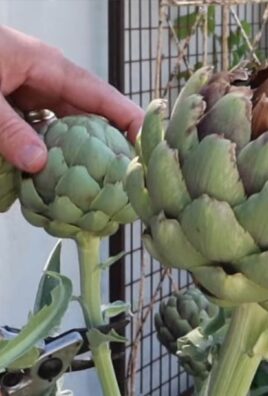
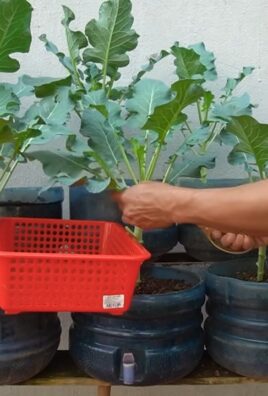
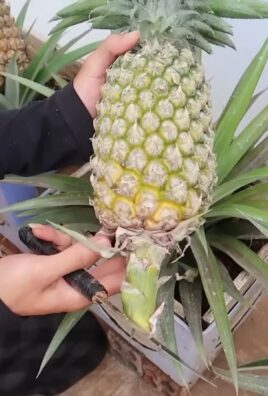
Leave a Comment